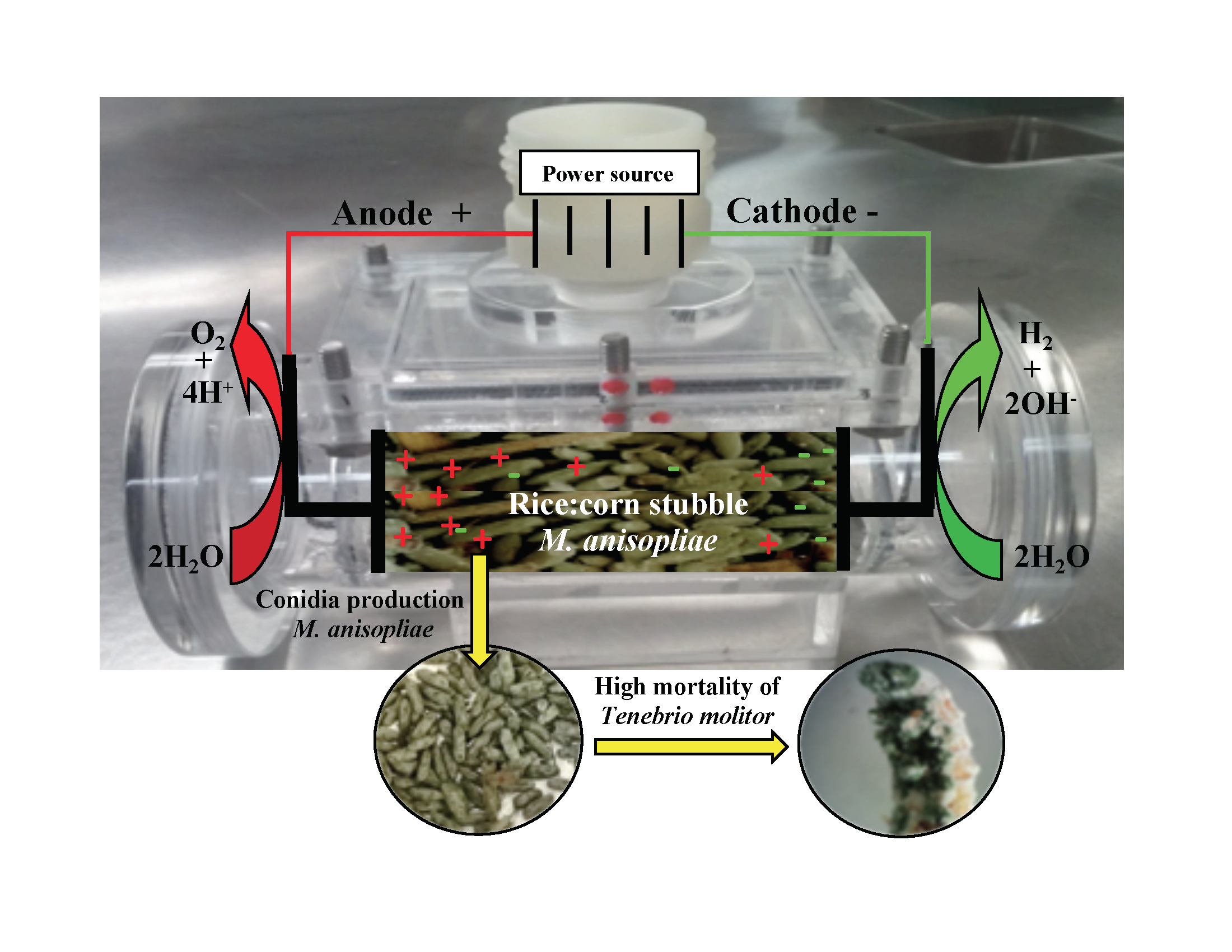 |
|
The effects of an electric field on conidia production by Metarhizium anisopliae in solid state culture were determined. A 450-mL electrochemical cell (EC) with titanium ruthenium-oxide coated electrodes and packed with a mixture of rice:corn stubble, was inoculated with 1x106 conidia (g of initial dry support)-1 and incubated for 8 days (30ºC). Four days after starting the culture, a current density of 0.09 mA/cm2 was applied for 24 h. The moisture kept constant (75%), with and without electric field. With electric field, conidiation (4.9x108 ± 3.7x107 conidia (g of initial dry support)-1) did not show significant differences, but their viability and germination (67 and 45%, respectively) were lower than in the non-perturbated conidia. Total mortality of Tenebrio molitor larvae provoked by conidia produced in presence of the electric field was 40% higher compared to that provoked by the conidia control. The study showed that the application of electric field improving the conidial infectivity. This new approach is susceptible to be optimized to other fungi for biological control with the purpose of improving field performance and further investigations on the modification of cellular mechanisms by the electric field stimuli.
Keywords: Electric field, Solid-state culture, Entomopathogen fungus, Mortality.
|
|
 |

